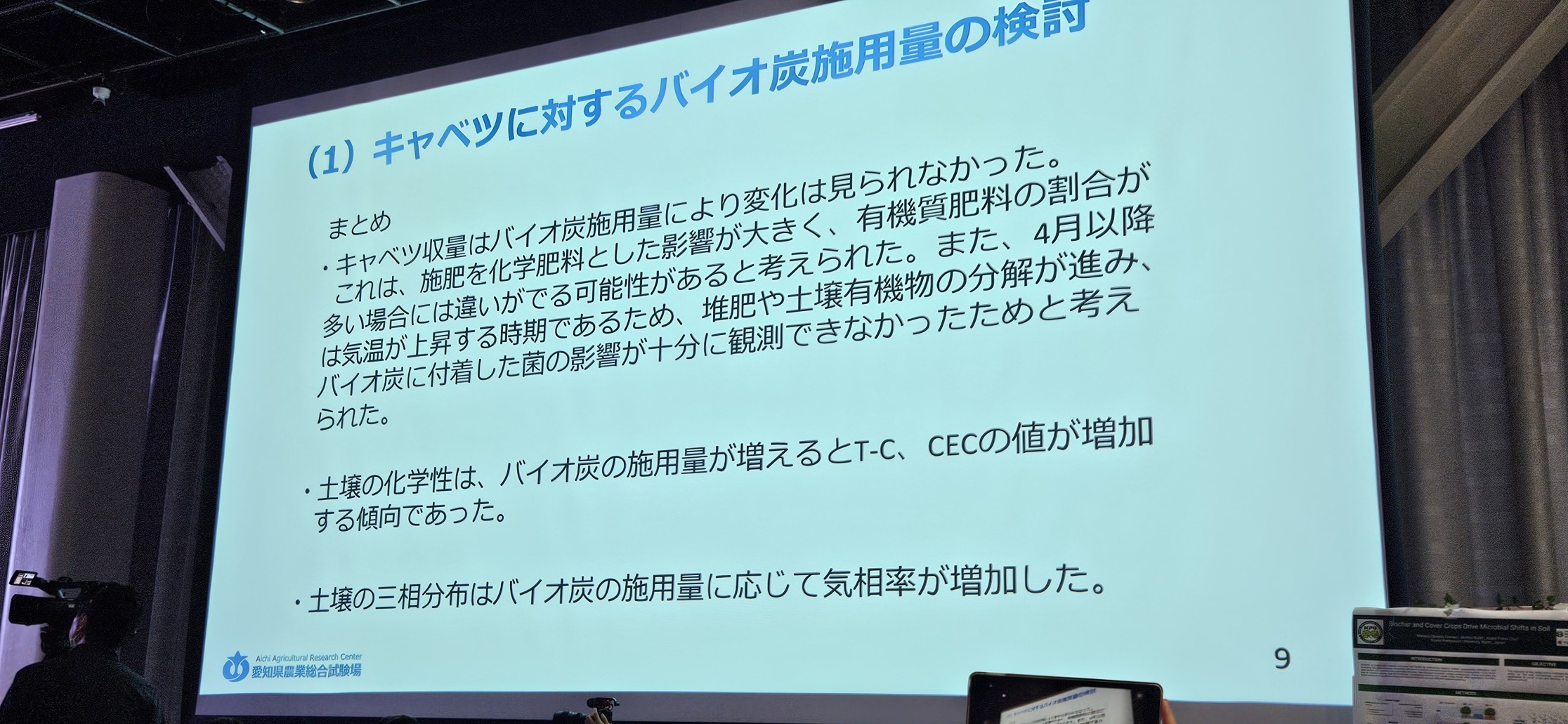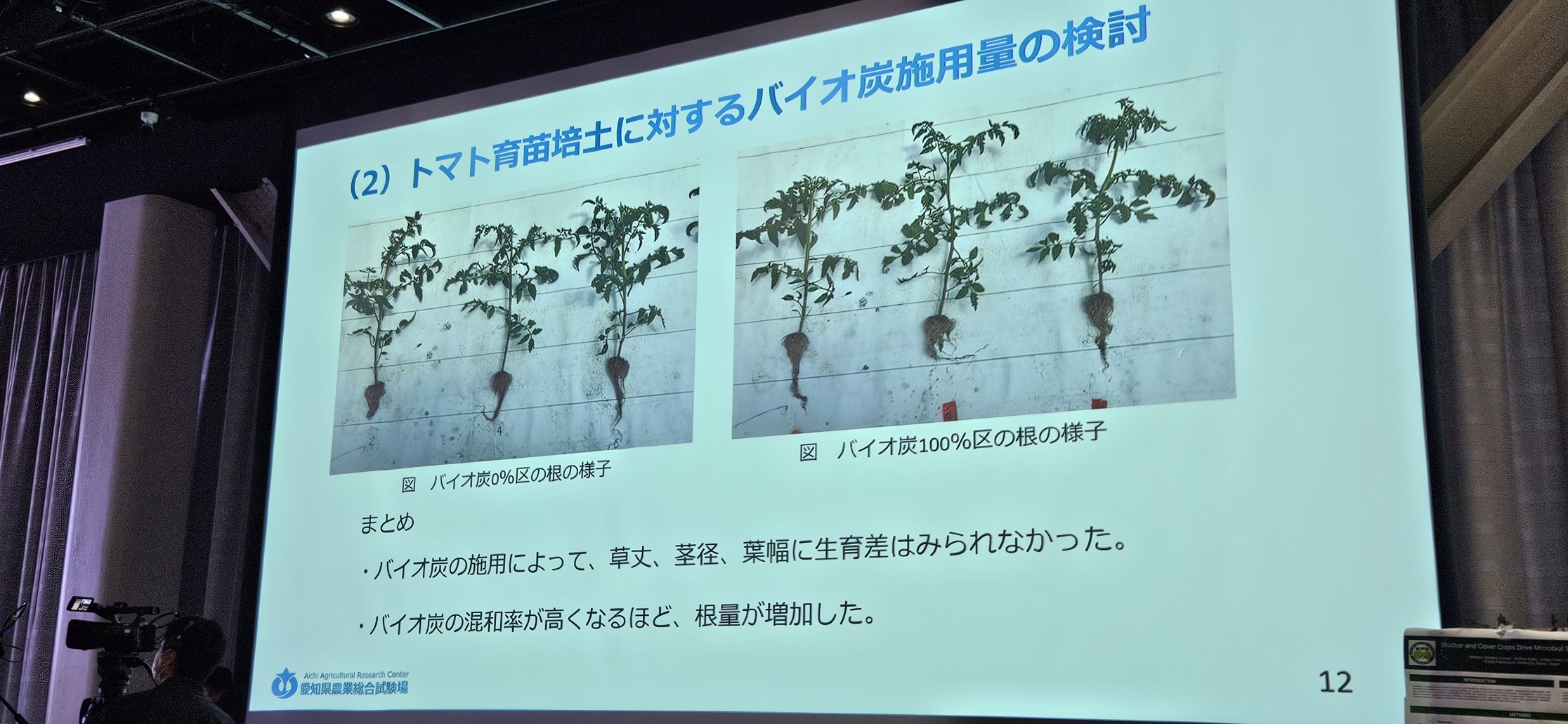We are often sold on dramatic success stories and breakthrough promises by biochar marketers. But the most important work—the work that translates potential into practice—is often quieter, more methodical, and far more essential.
This was my key takeaway from a compelling keynote on the second day of the Global Biochar Exchange, delivered by Mr. Toshinaru Fujii of the Aichi Agricultural Research Center in Japan. His presentation was a masterclass in the patient, boots-on-the-ground science required to build reliable protocols for farmers. It offered two powerful insights that challenge our assumptions.
Insight 1: A “No Result” is Still a Result
The first part of the research detailed an experiment applying different rates of microbially-inoculated biochar to cabbage fields that were also given chemical fertilizers. The result? There was no significant difference in cabbage yield across any of the application rates.

Photograph by Yuventius Nicky, “Cabbage Yield Slide” Nagoya, Japan 2025
In a world chasing headline-grabbing yield increases, this “null result” is profoundly important. It demonstrates a crucial principle of context: when a system is already saturated with highly available chemical fertilizers, the subtler, biological benefits of an inoculated biochar may be overshadowed. It’s a sober reminder that biochar is not a magic bullet; it is a tool whose effectiveness is dictated by the environment it’s placed in.
Insight 2: The Most Important Work is Often Unseen
Perhaps the most telling experiment was with tomato seedlings. Mr. Fujii’s team grew them in media with varying percentages of biochar, from 0% to 100%.

Photograph by Yuventius Nicky, “Tomato Slide 2” Nagoya, Japan 2025
Above the soil line, there was little to no visible difference in plant height or leaf size. To the casual observer, the biochar appeared to be having a negligible effect.
But below the soil, a different story was unfolding. The seedlings grown in 50% and 100% biochar revealed a dramatically more robust and extensive root system. This is a powerful metaphor for biochar’s function. Its most profound work is often silent and unseen, building the resilient foundation—the root architecture—that supports the entire plant long-term.
The Frontier: From Broad Strokes to Sharp Specifics
The presentation concluded with a look at the future of this practical research: focusing on the specific challenge of using biochar made from chicken manure.
This material is locally abundant but high in potassium. The critical question is no longer “does biochar work?” but “what is the maximum application rate of this specific biochar before its high potassium levels become a problem for the soil?”
This is the frontier. Moving from broad concepts to sharp, prescriptive details. This is the unglamorous, iterative science that truly matters. It won’t always generate dramatic headlines, but it’s the patient work of researchers like Mr. Fujii that forges the promise of biochar into a reliable, trusted tool for farmers around the world.


